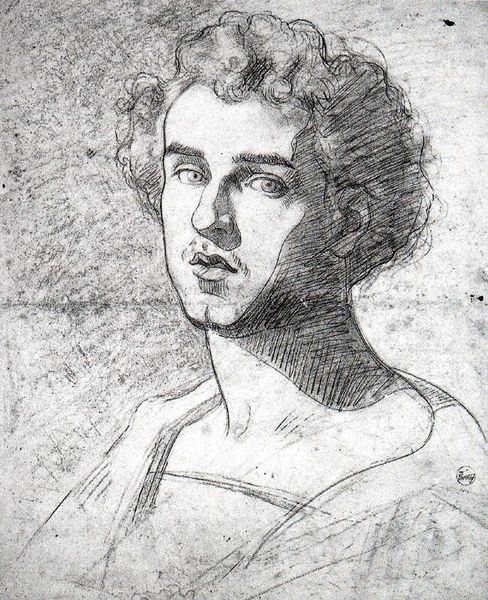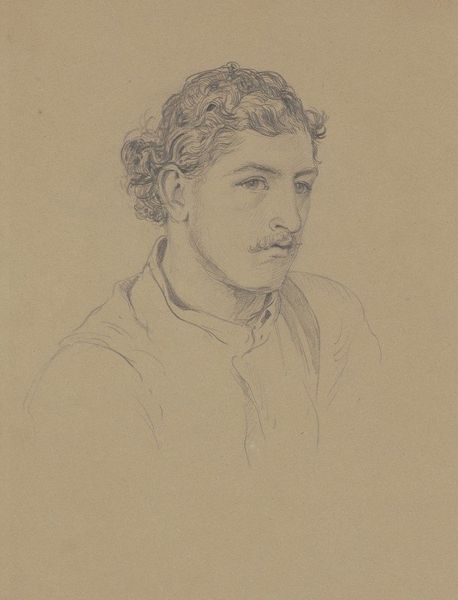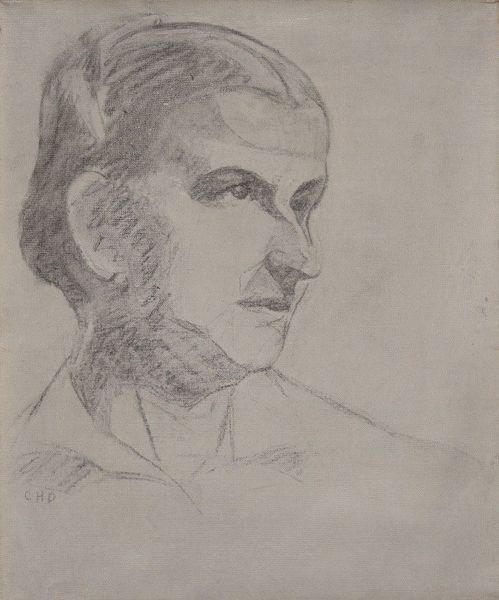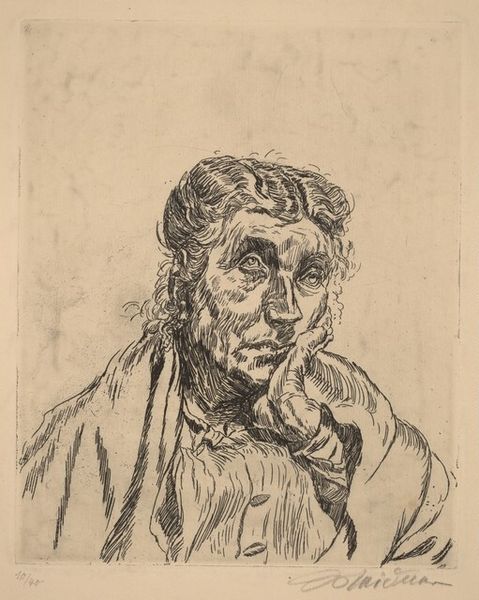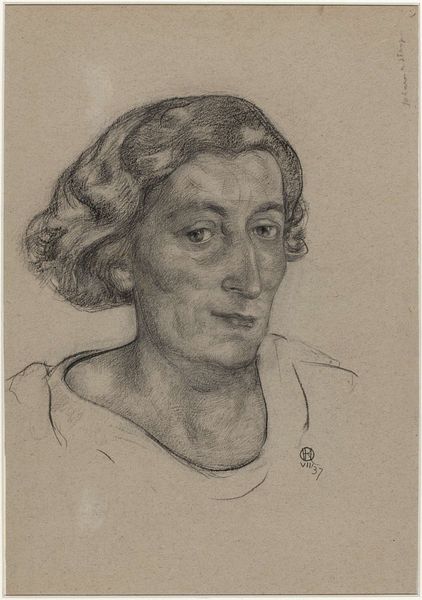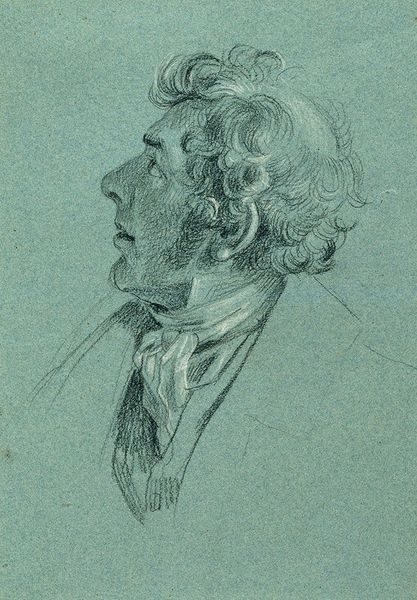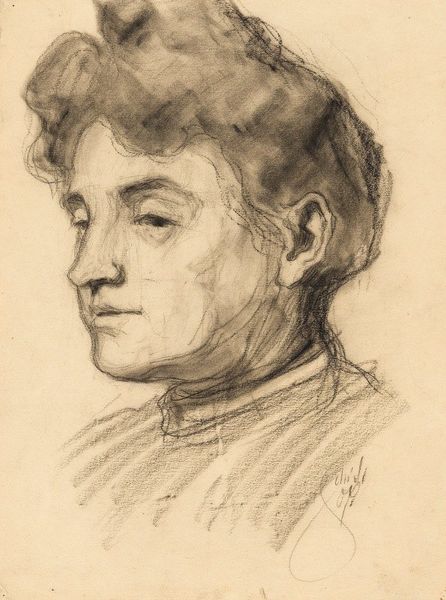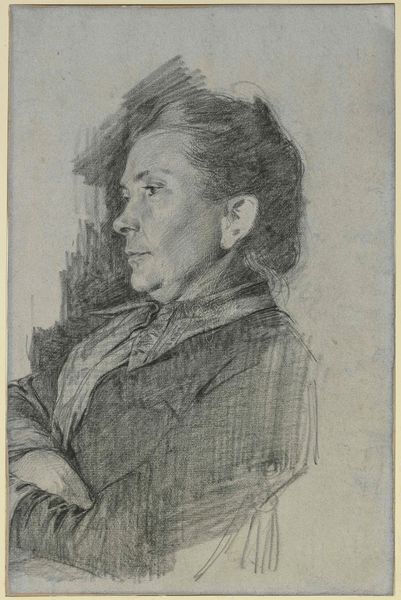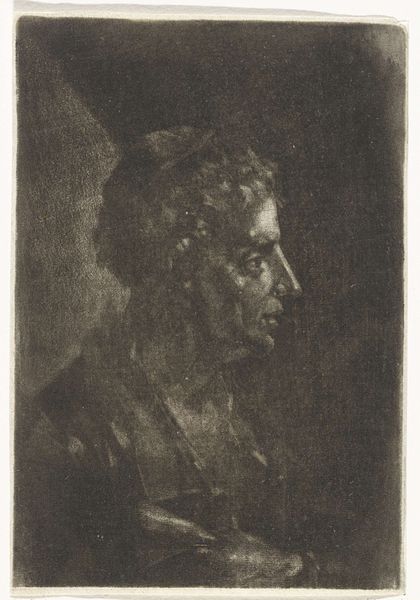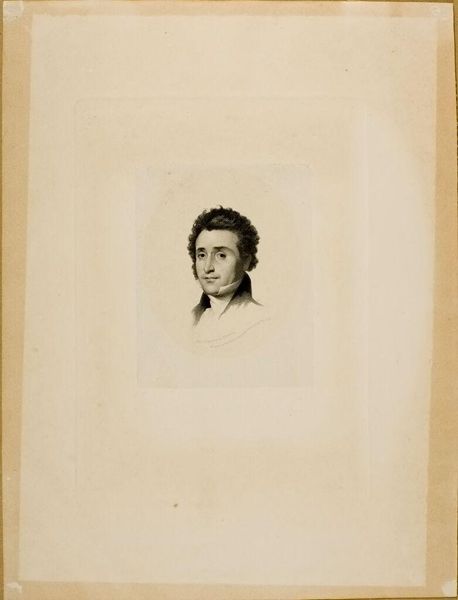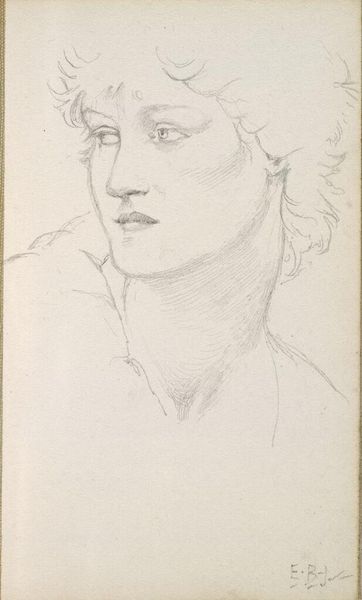
Copyright: David Burliuk,Fair Use
Curator: It's fascinating to see David Burliuk's 1925 portrait of Abraham Manievitch. The piece, rendered in graphite and pencil, offers such a raw, almost haunting visage of the artist. Editor: Haunting is the perfect word! The intensity in Manievitch's eyes really leaps out. There’s a weariness there, but also… defiance? And the rapid, almost scribbled quality of the drawing seems to amplify that tension. It feels deeply personal. Curator: Indeed. Consider how portraits of artists, especially during the early 20th century, were often deliberate acts of self-fashioning, embedding layers of symbolic meaning and cultural identity. It seems here Burliuk wanted to emphasize a kind of intellectual intensity through that piercing gaze. Editor: I see it. Especially given the social upheavals artists like Manievitch were navigating as Jewish émigrés fleeing persecution and antisemitism in Europe to establish new lives and identities. Was this intensity about something more, perhaps creative resistance? Curator: Precisely. The symbolic weight in the image is also interesting. Consider how the unfinished quality can itself be symbolic – incompleteness could gesture towards themes of displacement and longing. The lack of embellishment emphasizes vulnerability, perhaps reflecting his precarious situation as a refugee. Editor: Yes, and the way his gaze confronts the viewer implicates us in that vulnerability, right? Like, "What are *you* going to do with this information about my state of precarity and trauma?" In art historical narratives, marginalized people are so often made vulnerable again, so this act of defiant vulnerability becomes… empowering, perhaps? Curator: Yes. Through a historical lens, the symbols of exile become more explicit, but ultimately the portrait is effective for inviting us to recognize the human spirit persisting, prevailing. Editor: Absolutely. Thinking about it now, that starkness emphasizes survival against the odds, especially in such tumultuous times of ideological division, mass violence, and resurgent racism. It makes you wonder: How do our faces carry those histories forward? Curator: So true. What seems a simple portrait is, in fact, a complex meditation. Thank you for that perspective. Editor: And thank you for elucidating the context. It’s a powerful reminder that even in what appears to be a simple sketch, we can still unearth so much about the times and its subject.
Comments
No comments
Be the first to comment and join the conversation on the ultimate creative platform.
